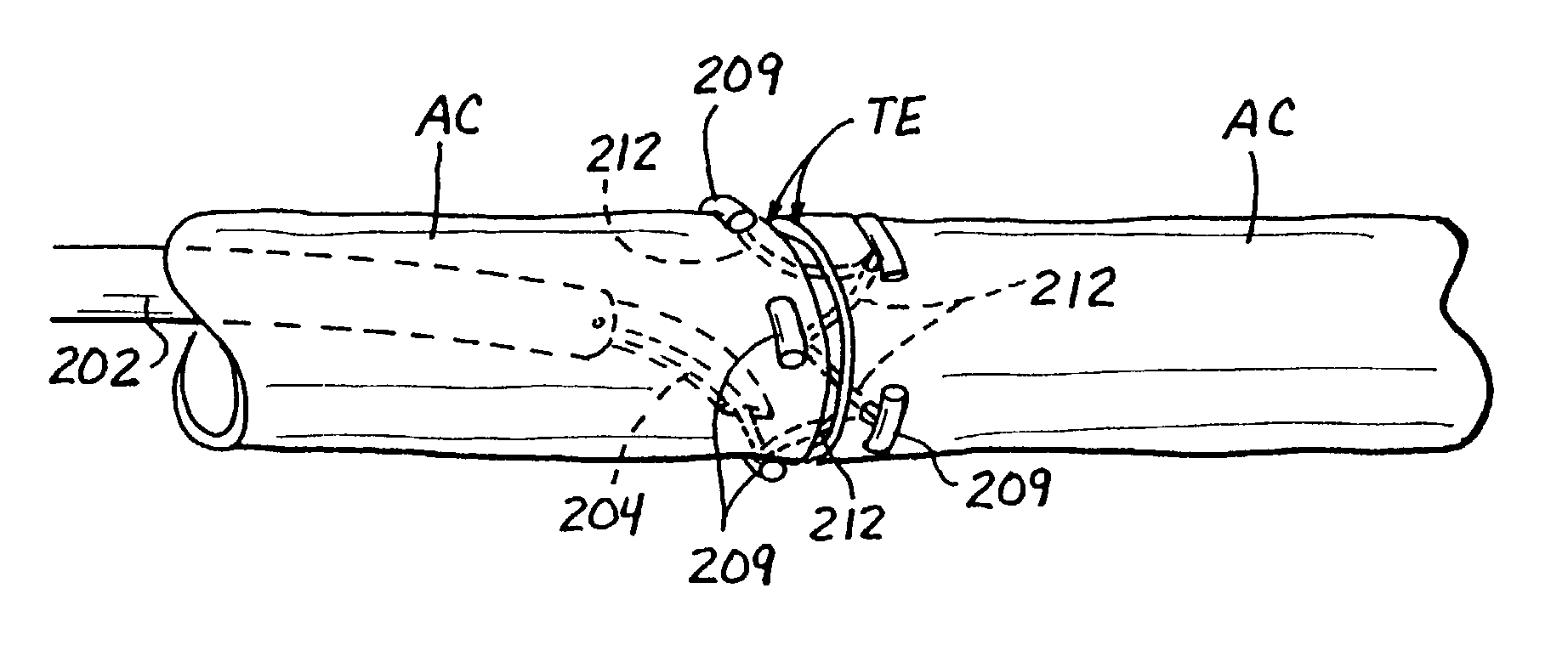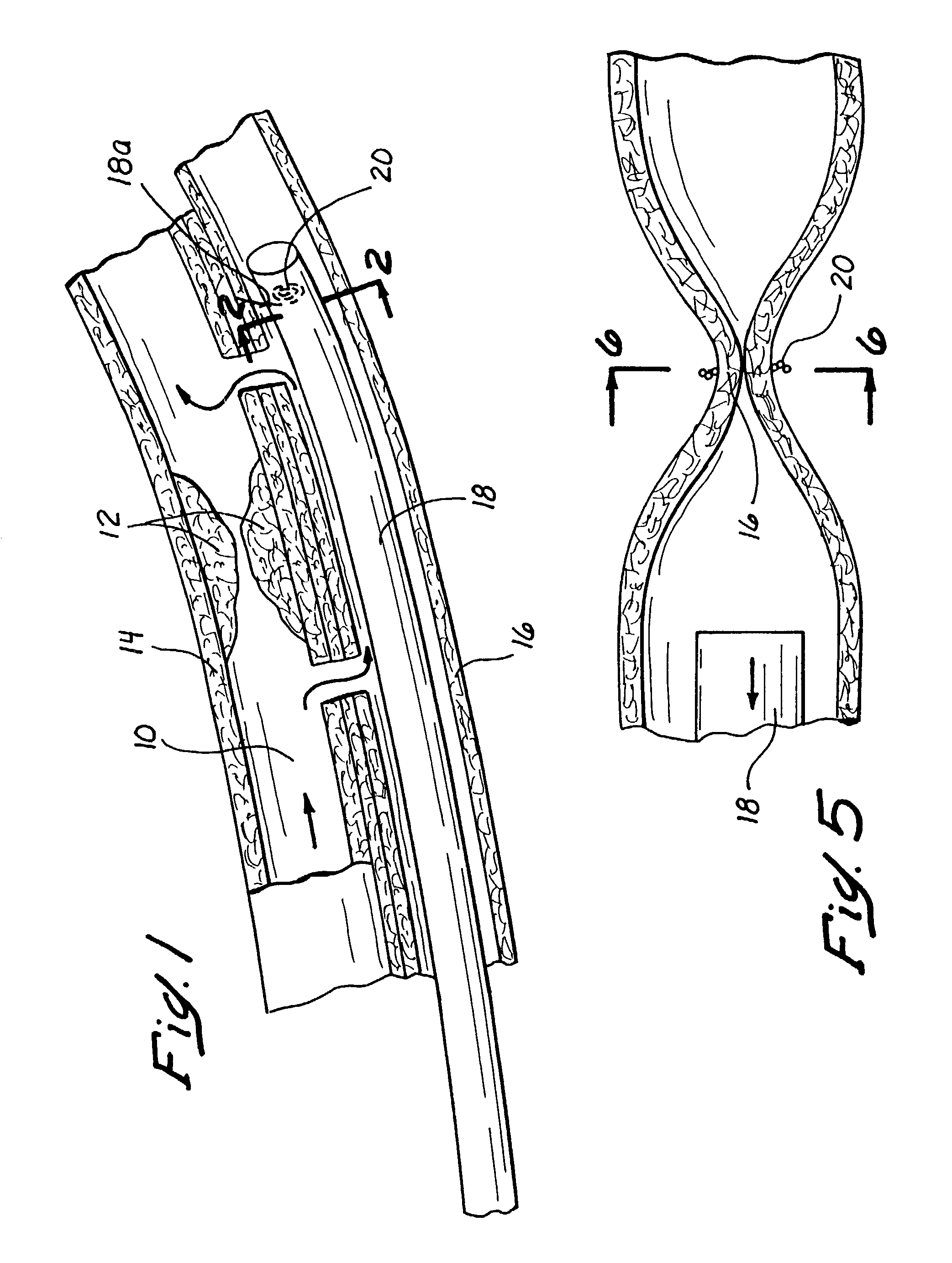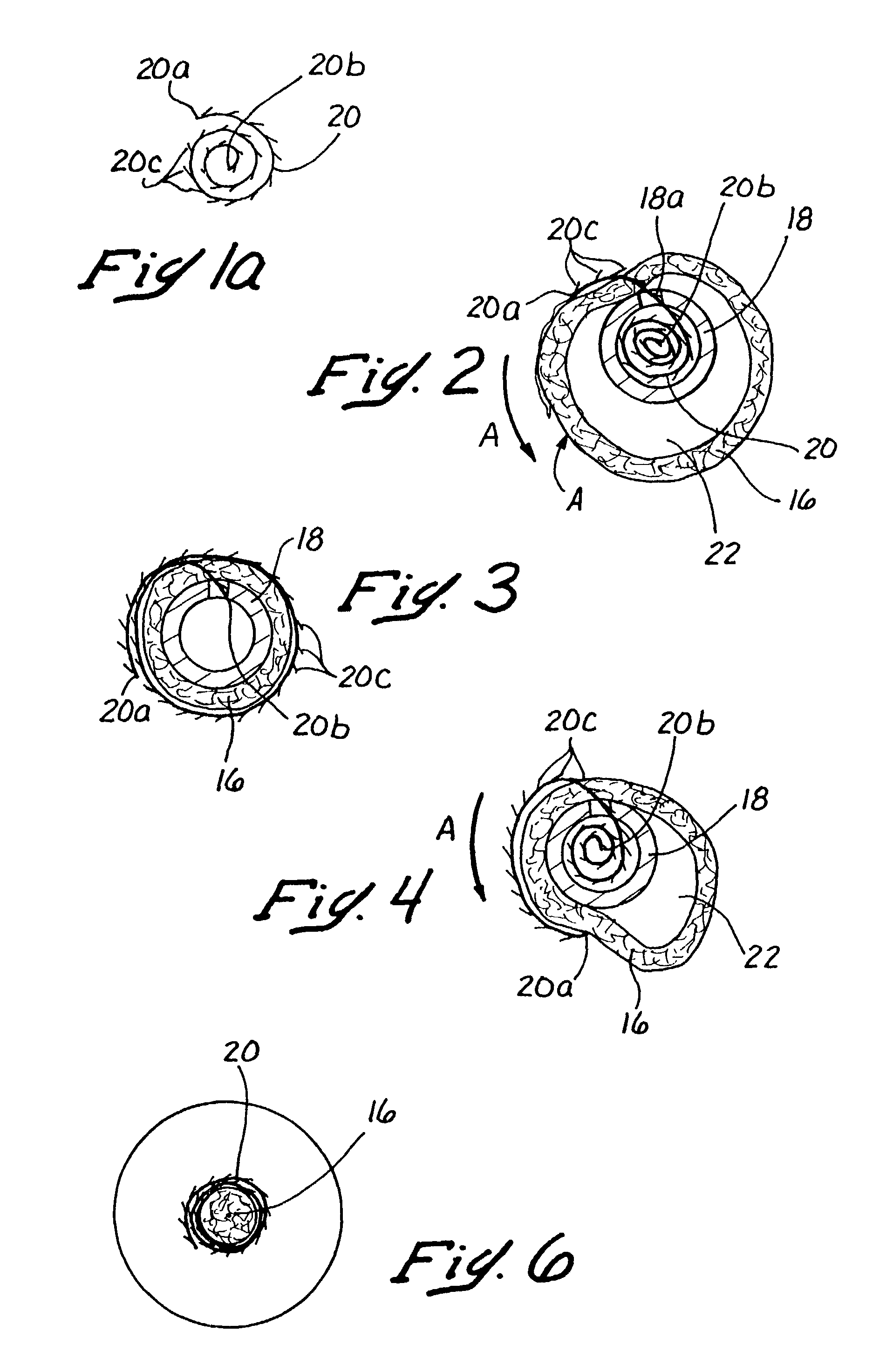Transluminal methods and devices for closing, forming attachments to, and/or forming anastomotic junctions in, luminal anatomical structures
a technology of transluminal devices and luminal anatomical structures, applied in the field of transluminal devices, can solve the problems of blood leakage into, graft may undergo undesirable migration or slippage, etc., and achieve the effect of occlude luminal anatomical structures and enhance their engagement or gripping of anatomical structures
- Summary
- Abstract
- Description
- Claims
- Application Information
AI Technical Summary
Benefits of technology
Problems solved by technology
Method used
Image
Examples
first embodiment
i. Clock Spring Occluder
[0055]A clock spring occluder 20, more clearly seen in FIG. 2a, comprises a generally spiral-shaped coil having a first outwardly oriented end 20a and a second inwardly oriented end 20b. The clock spring occluder may further have a multiplicity of outwardly extending engagement members, such as protrusions or barbs 20c which, as will be discussed below, enhance the ability of the occluder 20 to securely grasp and occlude the lumen of an anatomical structure such as a blood vessel.
[0056]The clock spring occluder 20 is deployed through the lumen of the catheter 18, as shown schematically in FIG. 1. The catheter 18 is inserted and positioned within the vessel 16 such that side opening 18a formed at the distal end of the catheter 18 is aligned with and juxtapositioned with a portion of the vessel wall 16, at the location where it is desired to occlude the vessel. The first outwardly oriented end 20a of the clock spring occluder 20 is then advanced through the sid...
second embodiment
ii. T-Occluder Apparatus
[0059]FIGS. 7–11 and 23–23b show a second embodiment of a transluminal device 24 which is useable for ligating a luminal structure, such as a blood vessel, or for the other applications such as anchoring or attaching an endoluminal graft or other endoluminal apparatus to the wall of the luminal structure (e.g., blood vessel).
[0060]This second embodiment of the intraluminal device 24 comprises an elongate rigid or pliable catheter 26 having a first lumen 26a and a second lumen 26b extending longitudinally therethrough. A hollow needle 28, which has an elongate slot 28b formed in one side thereof adjacent its distal end 28a, is slidably disposed within the first lumen 26a of the catheter 26 so as to be advancable out of the catheter, as shown. The second lumen 26b may be used for passage of a guidewire, to permit the catheter 26 to be advanced over a pre-positioned guidewire.
[0061]Disposed within the hollow bore of the curved needle 28 is a T-occluder apparatus...
third embodiment
iii. Twist Clip Apparatus
[0067]Referring now to FIGS. 16 and 17, there is shown a third embodiment on an intraluminal apparatus for occluding blood flow at a specific site within a luminal anatomical structure such as a blood vessel. As shown in FIG. 16, third embodiment may comprise an elongate rigid or pliable catheter 38 having a hollow lumen extending longitudinally therethrough and a side opening 38a formed near its distal end. Disposed within the lumen of the catheter 38 is a twist clip 42. The twist clip 42 is formed of malleable material and comprises a first straight section 42a and a second section 28b, which extends generally perpendicular to the first straight section 42a. An outwardly curved tip 42c is formed on the distal end of the second section 42b. As illustrated, the twist clip 42, and more particularly the outwardly curved tip 42c thereof, is initially advanced some distance out of the side opening 38a and to pierce through the vessel wall 40. Thereafter, the cat...
PUM
 Login to View More
Login to View More Abstract
Description
Claims
Application Information
 Login to View More
Login to View More - R&D
- Intellectual Property
- Life Sciences
- Materials
- Tech Scout
- Unparalleled Data Quality
- Higher Quality Content
- 60% Fewer Hallucinations
Browse by: Latest US Patents, China's latest patents, Technical Efficacy Thesaurus, Application Domain, Technology Topic, Popular Technical Reports.
© 2025 PatSnap. All rights reserved.Legal|Privacy policy|Modern Slavery Act Transparency Statement|Sitemap|About US| Contact US: help@patsnap.com



